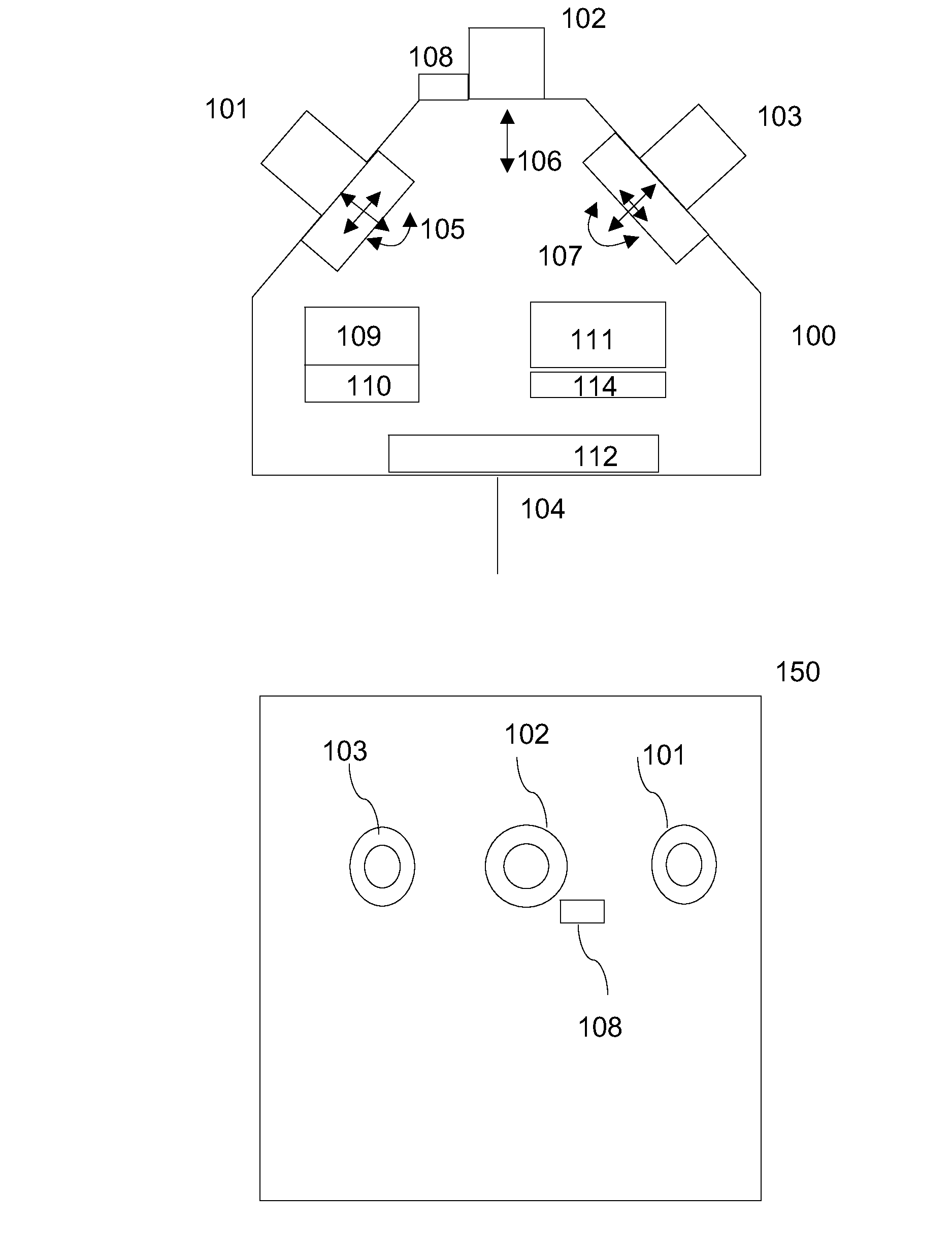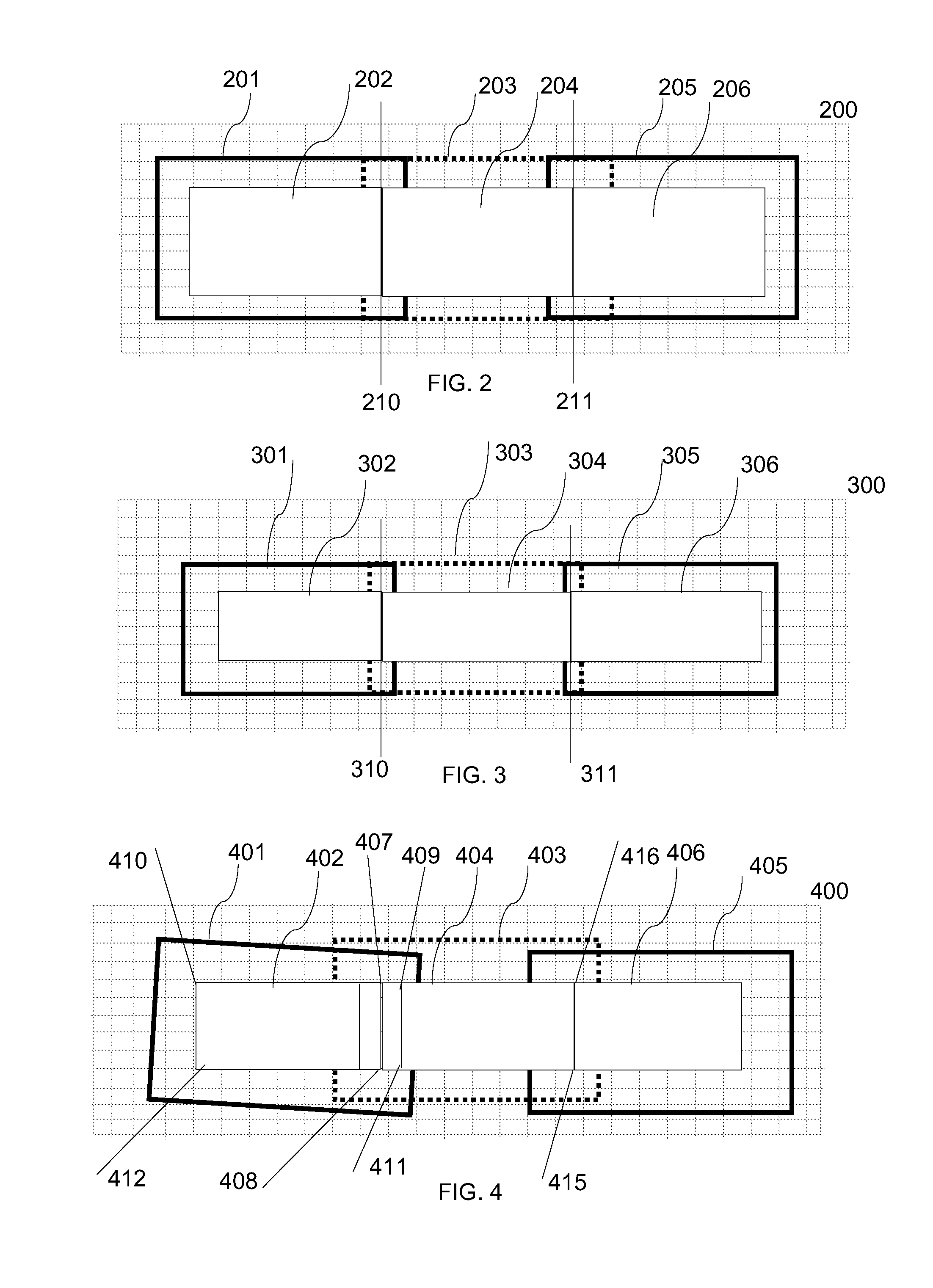Camera System for Creating an Image From a Plurality of Images
a camera system and image technology, applied in the field of digital image devices, can solve the problems of user difficulty, difficulty in providing fairly involved manual settings, and difficulty in adjusting the angle of the camera, so as to reduce the misalignment angle.
- Summary
- Abstract
- Description
- Claims
- Application Information
AI Technical Summary
Benefits of technology
Problems solved by technology
Method used
Image
Examples
first embodiment
[0112]In the present invention, a camera is a digital camera with at least 2 lenses and each lens being associated with an image sensor, which may for instance be a CCD image sensor. It may also be a CMOS image sensor, or any other image sensor that can record and provide a digital image. An image sensor has individual pixel element sensors which generate electrical signals. The electrical signals can form an image. The image can be stored in a memory. An image stored in a memory has individual pixels, which may be processed by an image processor. An image recorded by a digital camera may be displayed on a display in the camera body. An image may also be provided as a signal to the external world, for further processing, storage or display. An image may be a single still image. An image may also be a series of images or frames, forming a video image when encoded and later decoded and displayed in appropriate form.
[0113]In one embodiment, to create a panoramic image a camera has at l...
second embodiment
[0204]In one embodiment of the present invention, all images are recorded at substantially the same time. In a second embodiment, at least two images may be taken at substantially not the same time.
[0205]In a further embodiment, a camera has 3 or more lenses, each lens being associated with an image sensor. Each lens may be a zoom lens. All lenses may be in a relatively fixed position in a camera body. In such a construction, a lens may focus, and it may zoom, however, it has in all other ways a fixed position in relation to a reference position of the camera. As an illustrative example, lenses are provided in a camera that may be aligned in one line. Such an arrangement is not a required limitation. Lenses may be arranged in any arrangement. For instance 3 lenses may be arranged in a triangle. Multiple lenses may also be arranged in a rectangle, a square, or an array, or a circle, or any arrangement that may provide a stitched image as desired. The calibration of lenses and sensor ...
PUM
 Login to View More
Login to View More Abstract
Description
Claims
Application Information
 Login to View More
Login to View More - R&D
- Intellectual Property
- Life Sciences
- Materials
- Tech Scout
- Unparalleled Data Quality
- Higher Quality Content
- 60% Fewer Hallucinations
Browse by: Latest US Patents, China's latest patents, Technical Efficacy Thesaurus, Application Domain, Technology Topic, Popular Technical Reports.
© 2025 PatSnap. All rights reserved.Legal|Privacy policy|Modern Slavery Act Transparency Statement|Sitemap|About US| Contact US: help@patsnap.com



